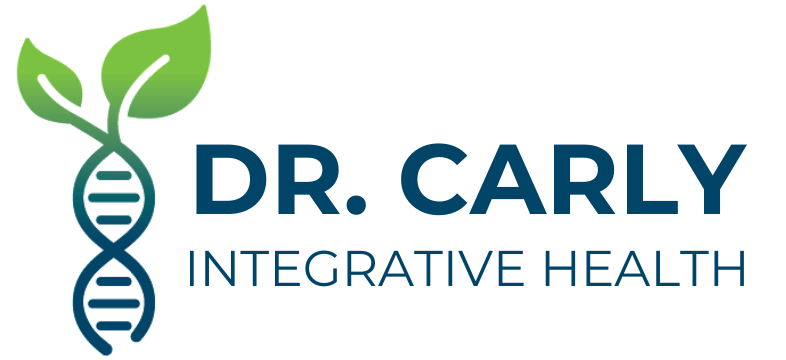How to Test Your Hormones
Are you concerned that a hormonal imbalance may be the root cause of your health concerns? Well, then you need to get your hormones tested. When it comes to hormonal imbalances, symptoms can often overlap. This means that a cortisol imbalance can look like a thyroid imbalance or estrogen excess can present like a progesterone deficiency. This is why the first step is to test, not guess.
Get the right hormones tested
When testing your hormones, it is important to test ALL your hormones. Because they all interact. And in my experience, it is extremely uncommon to find one hormonal imbalance. I often see progesterone deficiency accompanied by estrogen excess, hypothyroidism, thyroid resistance, insulin resistance, and adrenal dysfunction. If we had just tested estrogen and progesterone, we would have missed the majority of the problem.
Here are the key hormones that you want to assess:
Estrogen
Progesterone
DHEA
Testosterone
Cortisol
Insulin
Leptin
Thyroid hormones
Testing Sex Hormones
Sex hormones can be assessed by blood, saliva, or urine. There are pros and cons to each of these methods, but the most important part is WHEN. It is best to get your hormones tested on day 21 of your cycle so that you can accurately assess progesterone. Progesterone only spikes during the second half of your cycle.
Another important aspect of testing is not just the sex hormones themselves, but also their metabolites. It is quite common to see that hormone levels are normal, but their are issues with metabolism and the breakdown products of the hormones are causing symptoms.
For example, this patient had complaints of acne and facial hair growth. These are signs of high testosterone. Her DHEA and testosterone tested as normal, but her androgen metabolism was abnormal. If we had just done blood testing, we would have missed the cause of these symptoms.
Increased 5a-reductuse activity makes an androgen metabolite that is more stimulating to testosterone receptors than testosterone. This causes symptoms of excess androgens.
When it comes to estrogen, looking at the metabolites is also important, especially for cancer risk. The 4-hydroxy pathway leads to metabolites that can damage DNA and increase cancer risk. You can see in the example below, this patient has high activity in the 4-hydroxy pathway. She has a family history of breast cancer. But using natural therapeutics, we can block the 4-hydroxy pathway and improve her estrogen detoxification.
For this reason, I prefer to use dried urine testing (DUTCH Test). Not only is collecting samples easy and painless, but we also can analyze sex hormone metabolites to get a complete picture.
Another consideration when it comes to testing sex hormones is that your hormones naturally fluctuate throughout the month. Looking at one moment that month does not always tell us the full story. So if you have many symptoms connected to your cycle, you may want to consider cycle mapping. This is where you collect samples 11 days out of the month to get a complete picture of your hormonal fluctuations.
In the above example, you can see she is ovulating a few days late and that she continues to have high amounts of estrogen leading up to her menses. This can result in heavy bleeding during menses and PMS symptoms.
testing thyroid hormones
Most doctors use an indirect test to assess thyroid function without ever checking your thyroid hormones. And that just doesn't cut it. So you need to make sure that you get a full and complete thyroid evaluation. All thyroid tests are done by blood and you do not need to be fasting, but it is best to test in the morning. If you take a thyroid medication, you need to get your blood drawn before taking your medication for the day.
TSH
Free T4
Free T3
Reverse T3
Anti-TPO
Anti-TG
Testing Cortisol
You can assess cortisol by blood, urine, or saliva. But just like with sex hormones, WHEN you test is often more important than how you test.
Your cortisol levels naturally fluctuate throughout the day. So you HAVE to test throughout the day. That is why I recommend a 4 point saliva or urine test. I do not recommend an AM serum cortisol. That is simply not enough information to accurately assess adrenal production of cortisol.
I prefer the dried urine test (DUTCH Test) because it also measures cortisol metabolites. This is important to accurately assess adrenal hormone production because the cortisol measured is only about 3% of total adrenal production for the day. Your body also has mechanisms to modulate cortisol levels outside of the adrenal gland, so cortisol alone does not often tell the whole story.
In the example below, we see that total free cortisol is normal but metabolized cortisol is low. This implies slowed cortisol clearance and low HPA axis activity. If we had just measured free cortisol, we may have assumed that her HPA axis was fine and not done any treatment.
Testing blood sugar
Blood sugar balance is incredibly important to assess along with your other hormones. It is often the root cause of the both adrenal and sex hormone imbalances, but it is often overlooked when assessing hormones.
You can assess your blood sugar by doing a fasting blood test (so do it first thing in the morning):
Fasting blood glucose
Fasting insulin
HbA1c
Fasting leptin
what to do with your lab tests
Once you get your test results, the next step is to interpret them correctly. Correct interpretation includes the use of optimal reference ranges (not lab reference ranges) and integrating all the results to get the whole picture. This is often easier said than done, so I recommend working with a skilled doctor.






